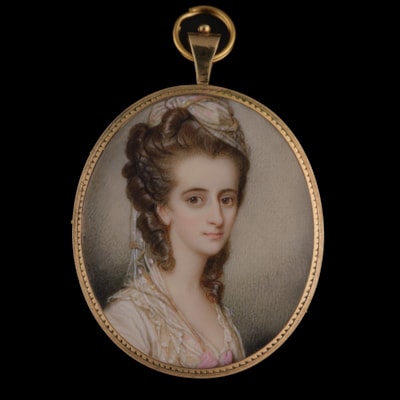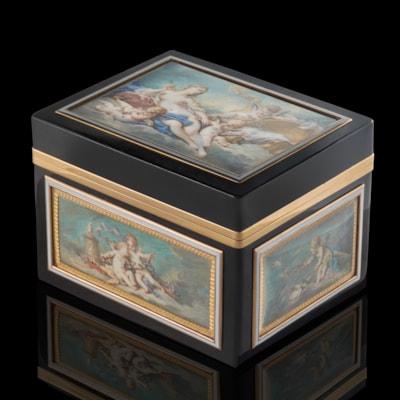CHRISTIAN RICHTER
(1678-1732)Portrait miniature of a Gentleman, wearing lilac-coloured coat, gold waistcoat with blue embroidery and white lace jabot
Circa 1715
Oval, 7.7 cm (3 inches) high
Watercolour on vellum laid down on card
Later gilt frame with engraved border
SOLD
This clever, relaxed detail highlights (or rather, disguises) the fact that, as from 1715 the artist Richter was facially disfigured after an illness and was taking on very few commissions. For a portrait artist this disfigurement may have signalled the end of a career, as the practical process of painting people meant that both patron and artist spent the process looking closely at each other. As part of a supportive group of other Swedish artists (Richter likely studied under Elias Brenner, the the leading Swedish miniaturist of the age), he was able to continue his career, even if that meant copying into miniature format the oil portraits painted by Swedes Hans Hysing and Michael Dahl.
Richter’s portrait miniatures show a grandiose style which reflect his close association with painters in oil. After first studying as a goldsmith (following the career trajectory of other portrait miniaturists, such as Nicholas Hilliard), he learned medal engraving under Arvid Karlsteen. Richter soon proceeded to Berlin then Dresden, seeking patronage by utilising contacts from previous acquaintances. Arriving in London in 1704, he quickly established himself as a miniaturist. We can gather through Vertue’s notebooks that Richter and Dahl developed an emphatic bond- most likely due to their shared native land, and the latter; “…encouraged him & promoted him all he cou’d by which means he became really an excellent Master…really better than any of his contemporaries”.
The high level of skill noted by observers such as Vertue can be seen in this portrait, not only in the careful delineation of the sitter’s features but also the observation of drapery and details which signal the sitter’s wealth and status – the expensive lace silk jabot and heavily embroidered waistcoat.

shipping notice
Worldwide shipping is included in all prices.
The Limner Company does not accept any responsibility for import duty, this is to be paid by the buyer.
Some stock items contain materials from endangered species which are governed by CITES regulations and will require a permit to export outside of Great Britain. If a certificate of export is required then this will be the responsibility of and paid for by the buyer .
you may also like













